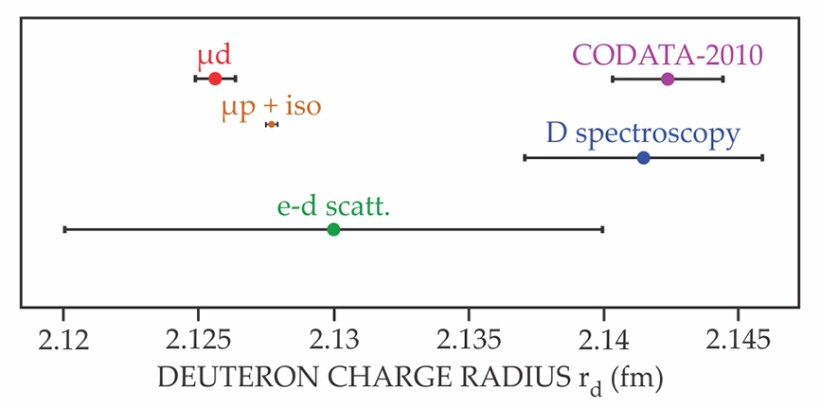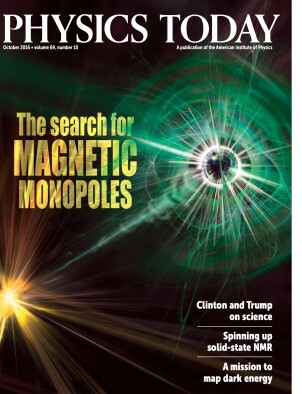Deuteron joins proton as smaller than expected
DOI: 10.1063/PT.3.3322
According to the international Committee on Data for Science and Technology (CODATA), the charge radius of the proton is 0.8768(69) fm. Few researchers would give that number much thought if not for measurements in 2010 and 2013 that yielded a radius 4% smaller than and 7.2 standard deviations distant from the CODATA value. Randolf Pohl of the Max Planck Institute of Quantum Optics in Garching, Germany, and colleagues obtained the curiously low radius after analyzing the energy-level shifts of muons orbiting hydrogen nuclei. With a mass 207 times that of the electron, a muon has a tighter orbital that more closely overlaps the nuclear charge distribution, which makes the negatively charged particle a useful tool for probing nuclear dimensions. The discrepancy between the results of muon-based and other experimental investigations has come to be known as the proton radius puzzle.
Now Pohl and his colleagues have used the same technique to measure the radius of the deuteron, a nucleus of one proton and one neutron. The researchers shot a beam of muons at a target of D2 gas. Lasers excited some of the atoms whose electrons were replaced by muons and probed the muons’ energy-level transitions. By combining the measurements with theory, the researchers came up with a deuteron charge radius of 2.12562(78) fm. That’s 7.5 σ smaller than the CODATA value (see graph; the new result is in red). In addition, both the proton and deuteron sizes are in tension with the values obtained by applying the same technique to atoms with electrons rather than muons.

The new study reinforces the notion that something is amiss in our understanding of particle or atomic physics. The most tantalizing possibility is that the standard model is wrong—perhaps muons interact with other particles differently than electrons do, for example. Pohl considers that explanation unlikely. His group and others are conducting experiments to precisely measure the Rydberg constant, which, if favorably reevaluated, could resolve the discrepancy. (R. Pohl et al., Science 353, 669, 2016, dio:10.1126/science.aaf2468
More about the Authors
Andrew Grant. agrant@aip.org
